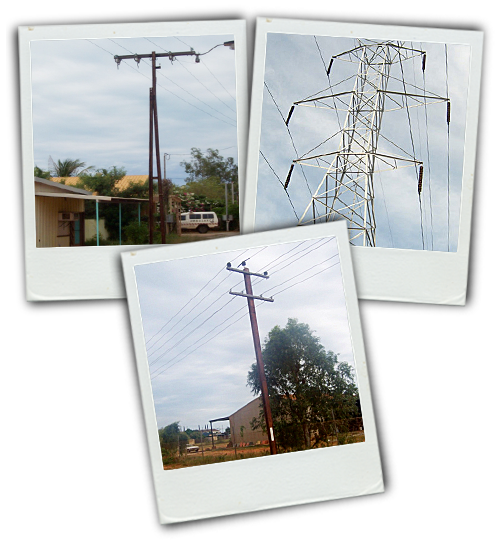Powerlines allow electricity to make its journey from the power station to your home, school or local business.
Powerlines are normally made from copper and aluminium. These metals are used because they are good conductors of electricity, which means they transport electricity easily.
Powerlines transport different voltage of electricity from as much as 220,000 volts to 240 volts.

- In some towns you can’t see the powerlines because they are underground. They are made of conducting materials but are coated in thick insulating polycarbonate. This combination of insulating plastics protect the wires and contain the flowing electricity.
Above ground powerlines are supported by poles of various designs and sizes.
- Wood
- Steel
- Reinforced concrete
- Steel lattice towers
Have you ever noticed that when you look at overhead powerlines sometimes you see three lines and other times you see four?
Some powerlines are transporting high voltage electricity and others low voltage.
Three powerlines and large insulators holding the wires are generally transporting high voltage.
Four powerlines and small ceramic ‘mushroom’ looking insulators holding the wires will generally be transporting low voltage electricity.
Have you seen poles and powerlines like this around your neighbourhood?







